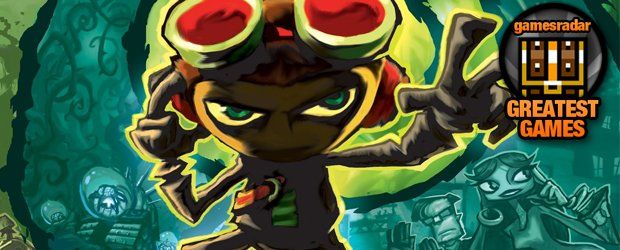

Levels still vary in length, but are broken down into digestible segments that minimise frustration and boredom.

You always know where you need to go, either because the game visibly places your objective in the distance, or provides a clear path that lets you feel out the route. A few are just miserably hard, such as the infamous Meat Circus.Īll this is fixed in Psychonauts 2. Some levels are too long, while others are unclear as to how you're supposed to complete them.
PSYCHONAUTS GAME FULL
This is particularly important in the context of the first Psychonauts, which is similarly stuffed full of clever ideas, but struggles to execute them in ways that are consistently fun. The result is a gradual and consistent unveiling of each level's story, rather than having it fed to you in chunks by audio-logs or expositional graffiti. Such use of juxtaposition and metaphor runs right through Psychonauts 2, with the game often using two conflicting or overlapping ideas at the foundation for its various worlds. Here, Raz must convince Hollis' 'heart' to stop 'racing' on its own, and instead acknowledge that help from other people is a good thing, thereby stopping her from rushing off in the real world and doing damage both to herself and others around her. At one point Raz enters Hollis' "Cardiology Department", which has been converted into a horse racing-style betting shop where the horses have been replaced with card suits. But it's the way the level represents the process of Hollis' mental change, and how Raz attempts to undo the damage that he's done, that makes it such a brilliant example of level design as storytelling. Taken broadly, it's a simple juxtaposition. When Raz starts messing around, however, the hospital transforms into a casino, representing Hollis' increased impulsiveness and recklessness. Prior to Raz's mental meddling, Hollis' consciousness is represented as a hospital, a clean and orderly space where thoughts are treated with care and consideration. Perhaps the clearest evocation of that is Hollis' Hotstreak, wherein Raz deliberately manipulates the mind of a Psychonauts agent so she'll allow him to go on an important, possibly dangerous mission. Instead, Psychonauts 2's worlds are designed to communicate a specific idea at a conceptual level, one which builds over the course of the player's time in that place. This wonderful phrase was coined by Matthew Castle in his review of Psychonauts 2 to differentiate from the concept of 'environmental storytelling' which has been mocked into oblivion by a thousand jokes about putting skeletons on a toilet. These are specific, cumulative references designed to tell the player what is happening in this particular mind. And not in a vague way, like how other games use floating islands as an all-purpose metaphor for a fracturing reality or mentality. Moreover, everything within these spaces serves a purpose, either functional or representational. The same goes for the disgusting tooth-doors in Dr Loboto's mind, or the prismatic rainbow bridges in the Psi-King's rekindling consciousness. For example, in Ford's Follicles, the liberally scattered hairdryers are not just silly set-dressing, they can be used to create new pathways through the level. Firstly, like a dream, each world has its own functional internal logic that makes sense while you're in the dream. But there are several features of Psychonauts 2's dreamlike worlds that prevent them from feeling like randomness for the sake of it. Such wild variation could easily descend into incoherent nonsense.
Some of the ideas Psychonauts 2 cranks through could serve as the basis for entire games. There are worlds made of hair, worlds made of teeth, cooking gameshows with hand-puppet hosts and anthropomorphic food. Its levels are a delightful medley of bizarre visions, a whirling carousel of fantastical, grotesque and carnivalesque spaces. Even Dishonored 2, which has some of the best level design around, reverts to floating islands for its "Void" sections. It's a trope you'll see everywhere, from games like Arkham Asylum and Spider-Man, to Doom Eternal and Bioshock Infinite.

Most mainstream video-games struggle with surrealism, evidenced by how many of them resort to floating islands as shorthand for 'weird'.


 0 kommentar(er)
0 kommentar(er)
